The Act, curtain up
For decades, the search for beauty has been the hallmark of Rue Vintage 74, a project by Piluca Hueso and her mother that takes them around the world to find extraordinary pieces that are always exhibited in a very special way in the spaces they have created in a small street in the Prosperidad neighbourhood.
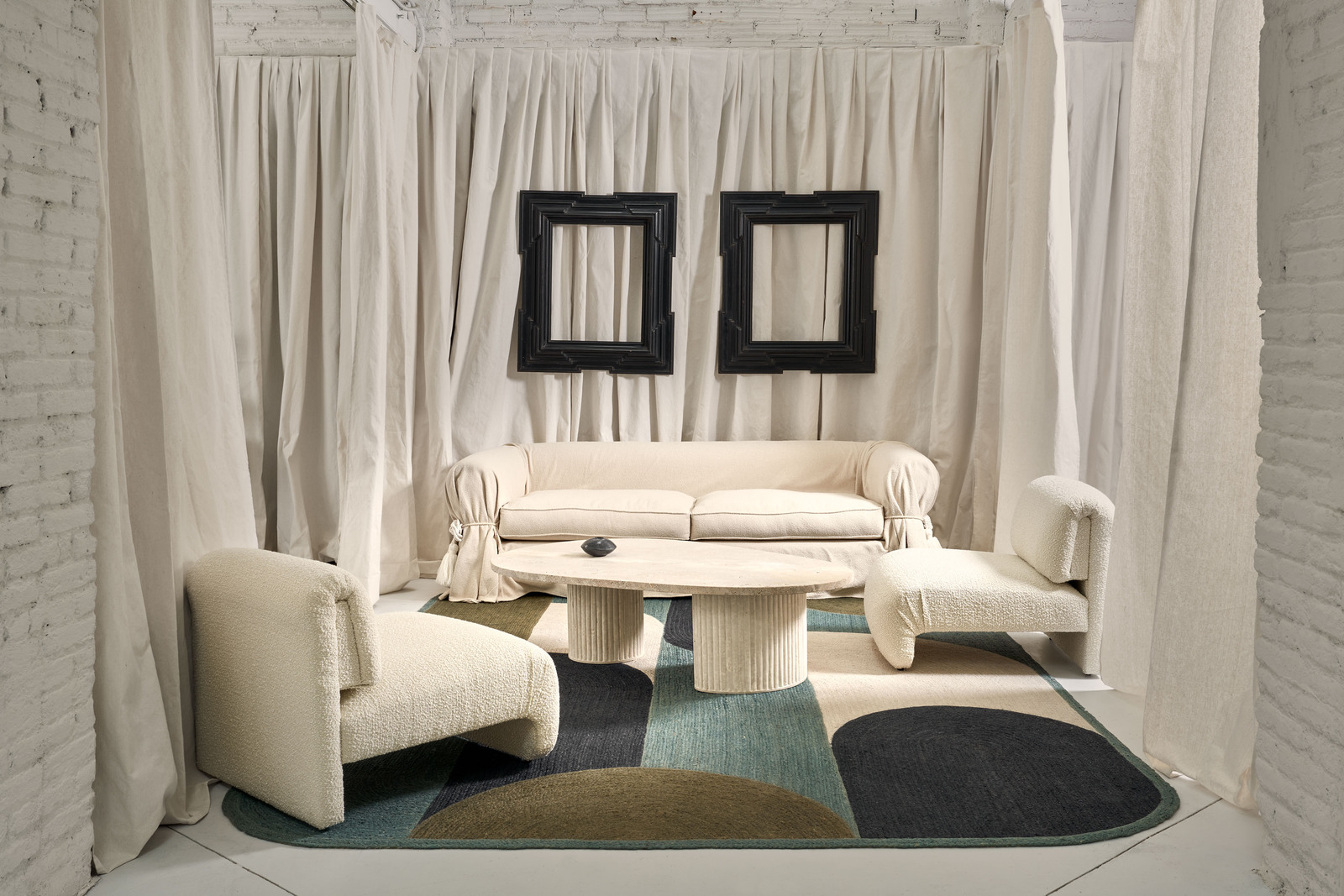
Their latest opening, their third, is called The Act and consists of a warehouse-cabin from the 1960s, a former building materials warehouse with exposed wooden beams, which they rightly describe as a “jewel” and which is incredibly well preserved to house a staging that bears the stamp of its artistic creator, the interior designer Marta de la Rica. More than 800 metres of fabric cover walls and ceilings in the manner of an Arab-inspired tent that serves as a backdrop to represent a theatrical act where a continuous blank canvas offers suggestive atmospheres full of creativity as if it were a real stage set and where to discover vintage and contemporary design objects and furniture, the result of a selection and staging that leaves no one indifferent.
The stage features signature pieces by such essential authors as Paolo Venini, Mario Botta, Gianfranco Frattini, Ernesto Treccani, Roberto Pamio and Renato Todo, among others.
Piluca Hueso tells us about The Act in this mini-interview.
How did the idea of creating a new space RV74 come about?
We found this wonderful venue, an old construction warehouse from 1960, and we fell in love with it. We thought of it as a perfect blank canvas to continue writing our story.
Why did you choose to collaborate with Marta de la Rica?
Marta has a unique sensitivity and a masterful ability to fuse antiques and vintage with contemporary pieces. Her play with textiles and colour inspired by classic works is a hallmark that is often repeated in her creations and we knew that she would know how to give a new life to this space.
What was the inspiration for this theatre? The Arab tents?
The inspiration came from a theatre so that the pieces are elevated to a new dimension. The sets are changing on a blank canvas of more than 800 metres of white fabric. Travel is part of our DNA and of our inspiration process, the African and especially the Arab influence is very present in our collections.
Have you collaborated with any textile company to create the scenery?
We brought the fabrics from Morocco, they are virgin cottons that haven’t even been washed, their appearance is regal and stiff, which helps a lot to give the theatrical air we were looking for.
Is there going to be a continuity in collaboration with other interior designers, and will the stage change according to a theme or objective?
The scenery will change but the blank canvas will remain intact. The idea is that in this new space the client can have fun, going from being a passive spectator to an active spectator in which we exchange dialogues with different themes and actions related to our universe.
This is a selection of 10 atmospheres with pieces that live the best role of their lives, headed by a portrait of their protagonists. Curtain up!
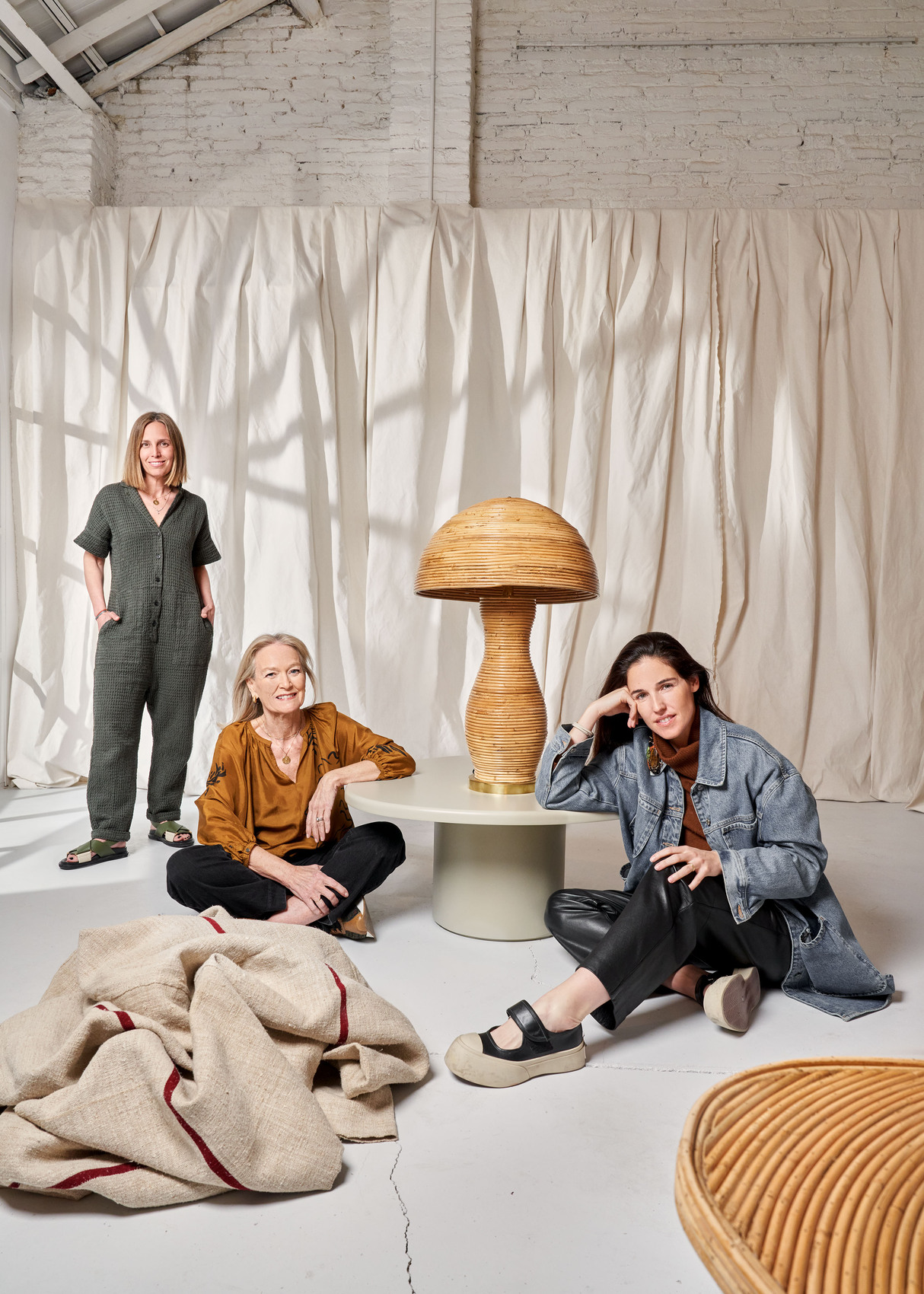
Piluca Hueso, her mother, Pilar Muñoz and Marta de la Rica pose in The Act. The lamp is an Italian handcrafted piece made of bamboo.
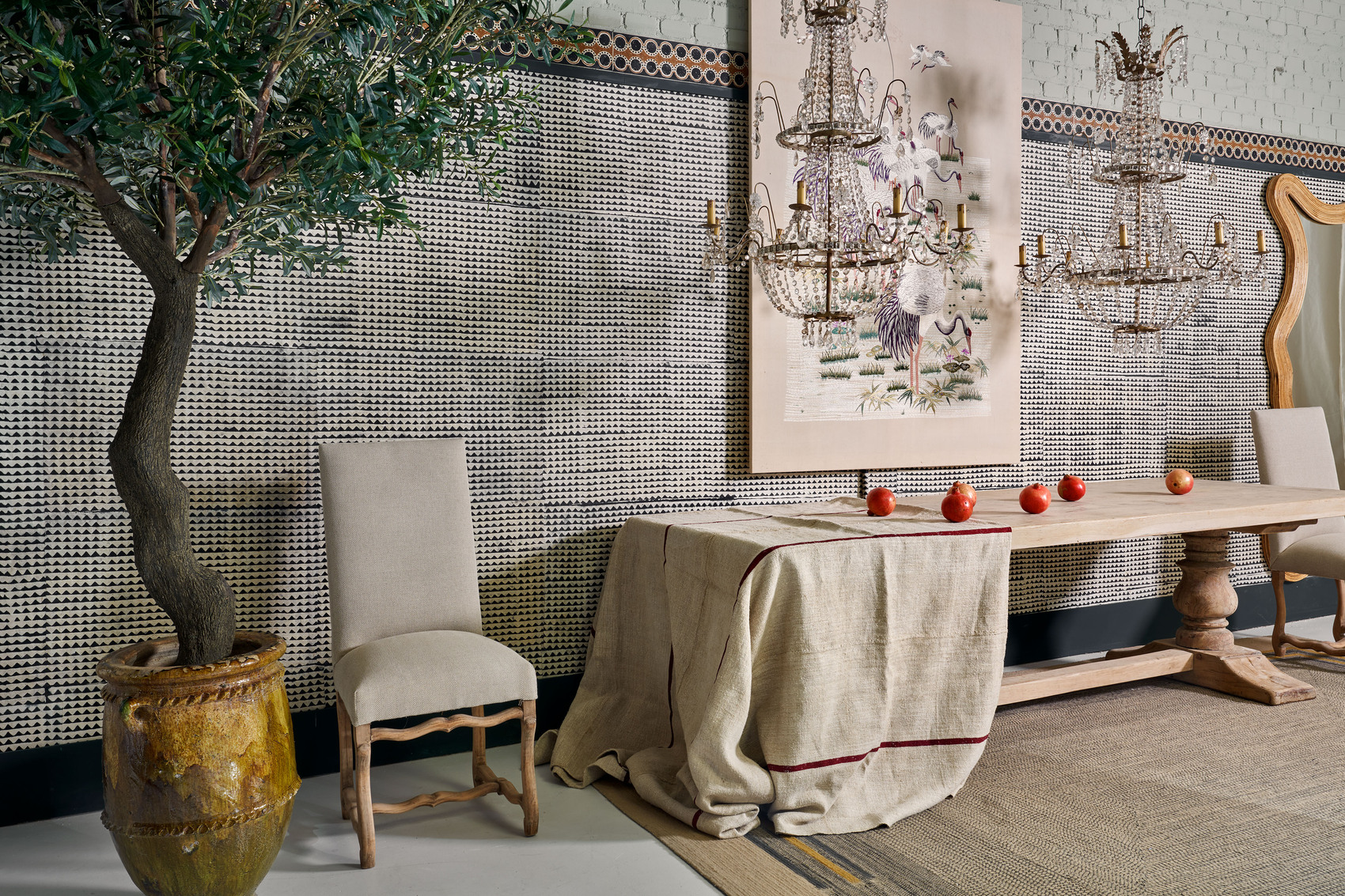
Next to a Tamegroute pottery vessel from Morocco, used as a flower pot, a raw upholstered chair and a 19th century French Templar table covered with rustic linen cloth. The two luminaires are two 19th century Genoese chandeliers.
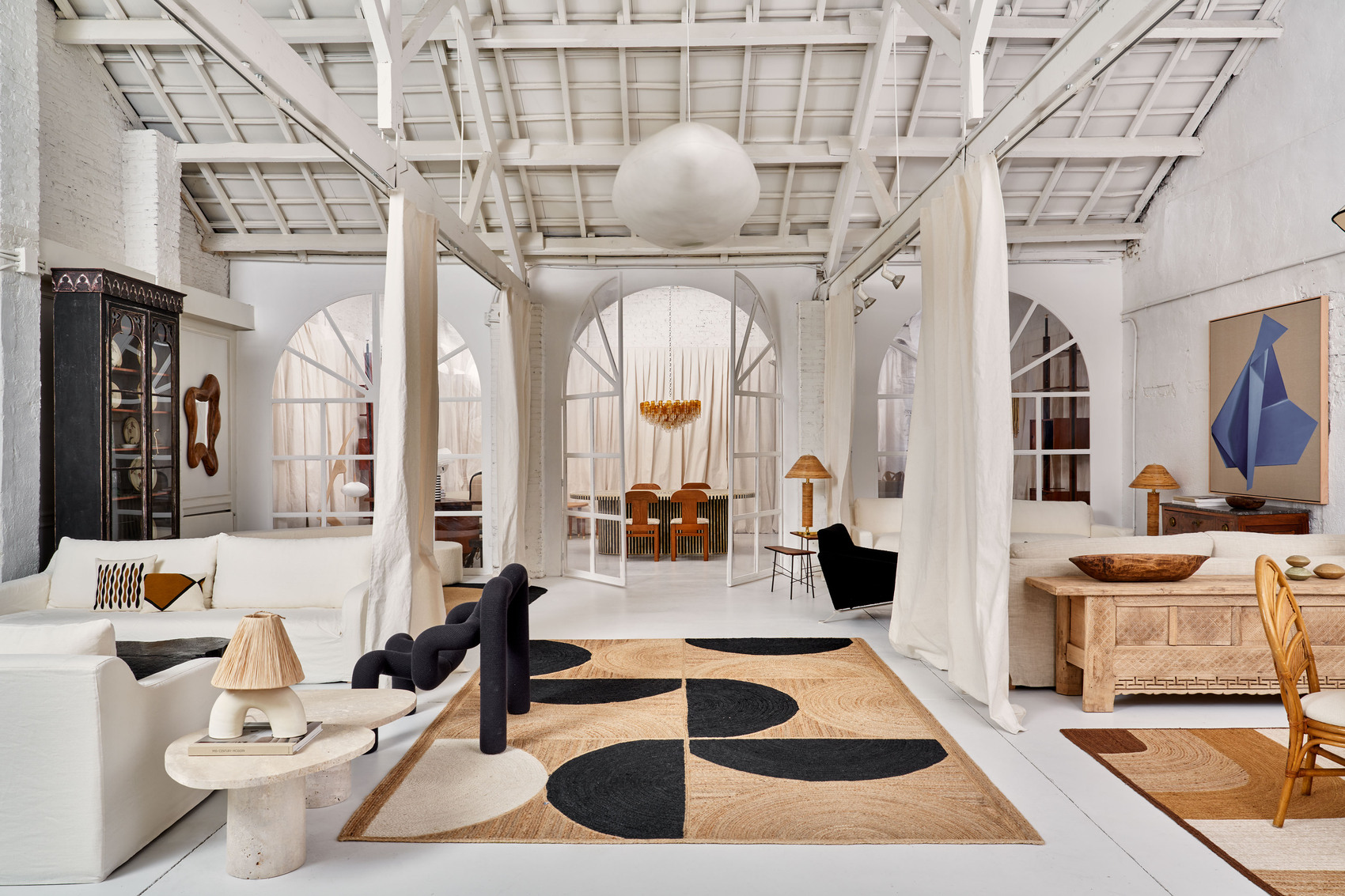
General view of the new space The Act, showing the different atmospheres created by RV74. In the centre, a large 100% jute rug with highly expressive geometric motifs stands out, very much in line with the theatrical set.
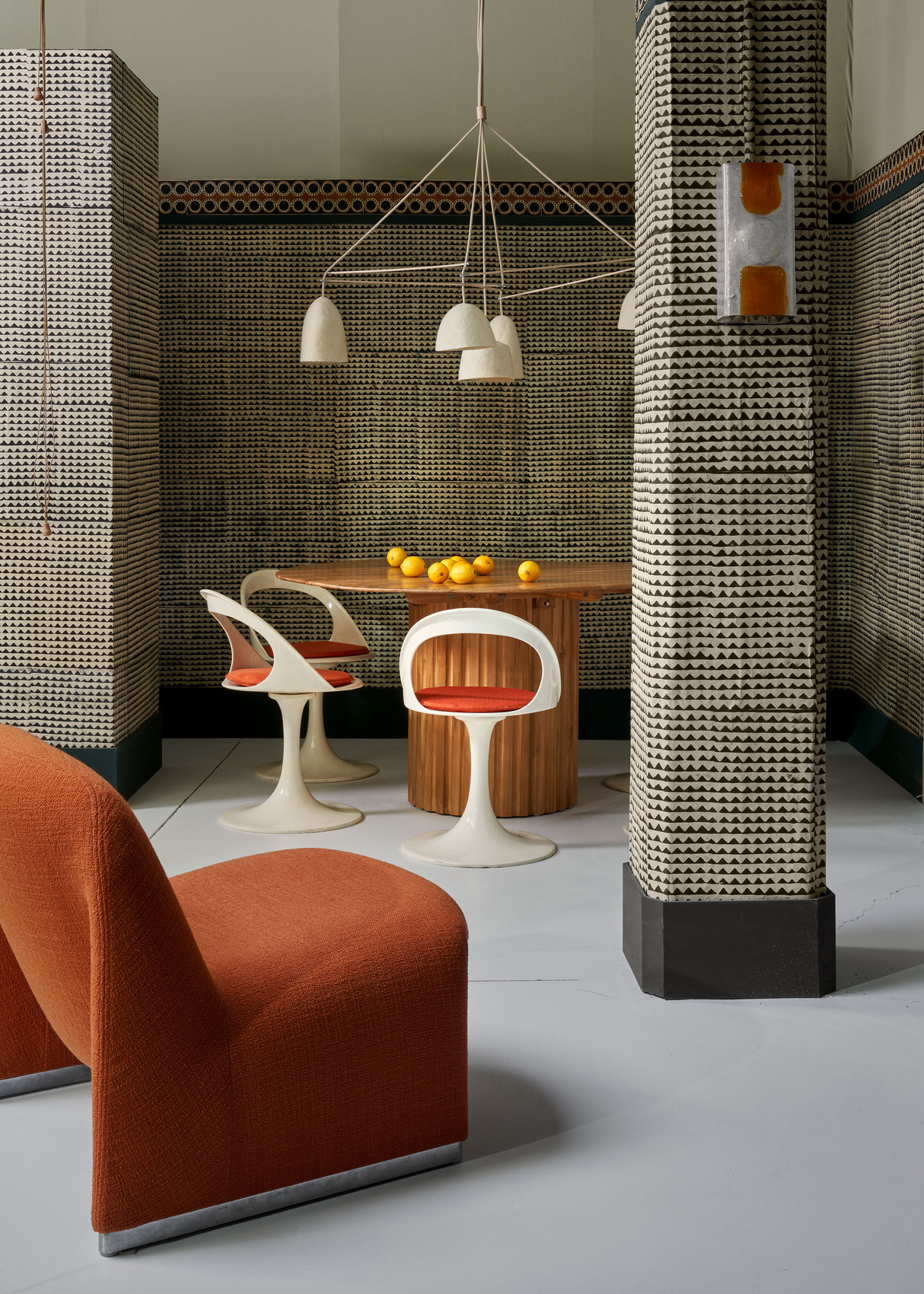
Dining corner with a round teak table surrounded by Italian chairs from the 1960s, original Acerbis chairs. The French lamp with felt lampshades is a handcrafted model inspired by the qelesh, a traditional Albanian hat worn by men in the countryside. In the foreground, the 1960s Alky armchair by Giancarlo Piretti, upholstered in orange.
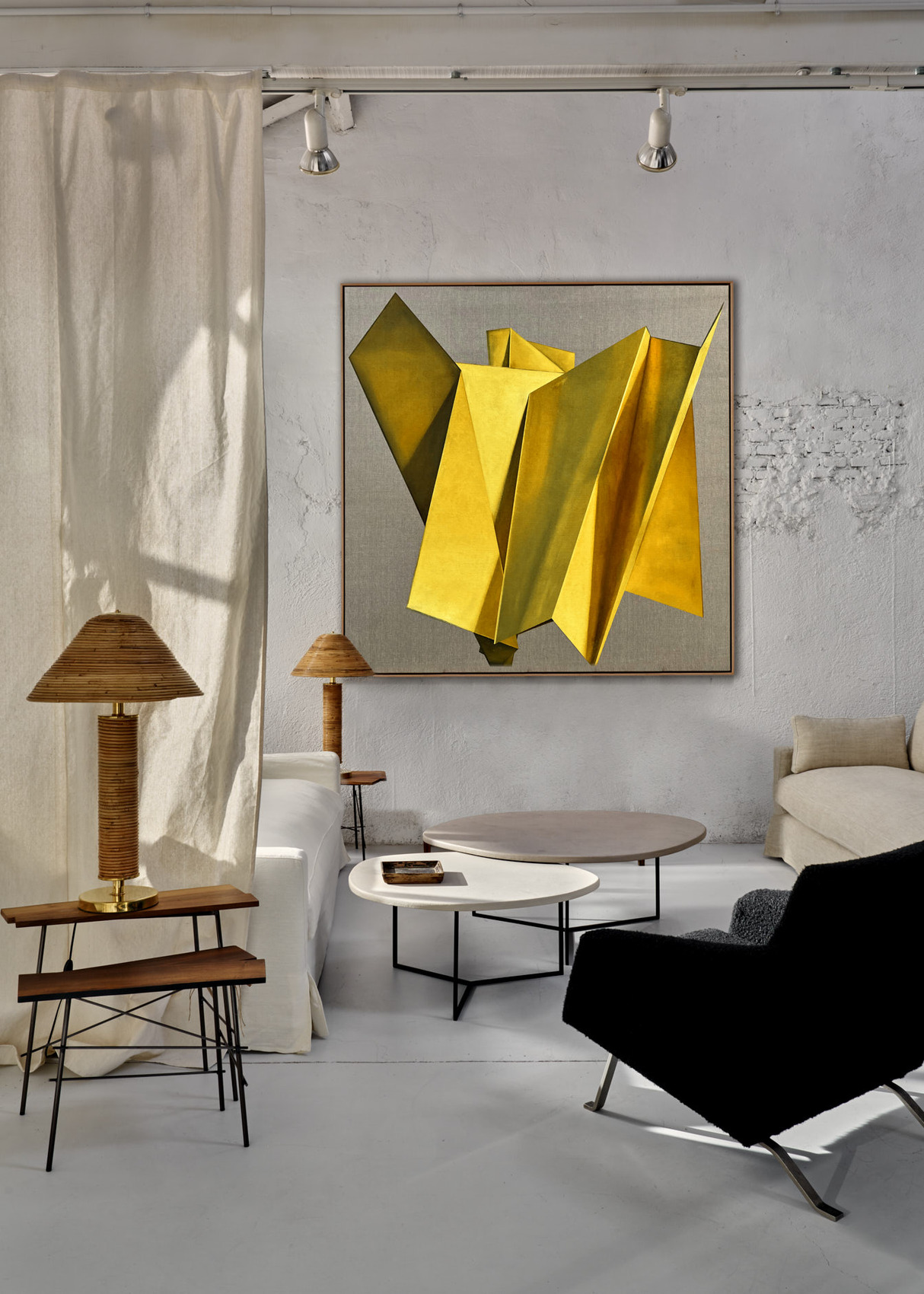
The Power of Yellow, by Ángela Mena, a work of art from Gärna Art Gallery, presides over this social area furnished with a pair of coffee tables by Argilita and an Italian armchair from the 1960s, upholstered in black and with chrome legs, side tables with irregular-edged walnut tops and Italian handcrafted lamps in brass and bamboo.
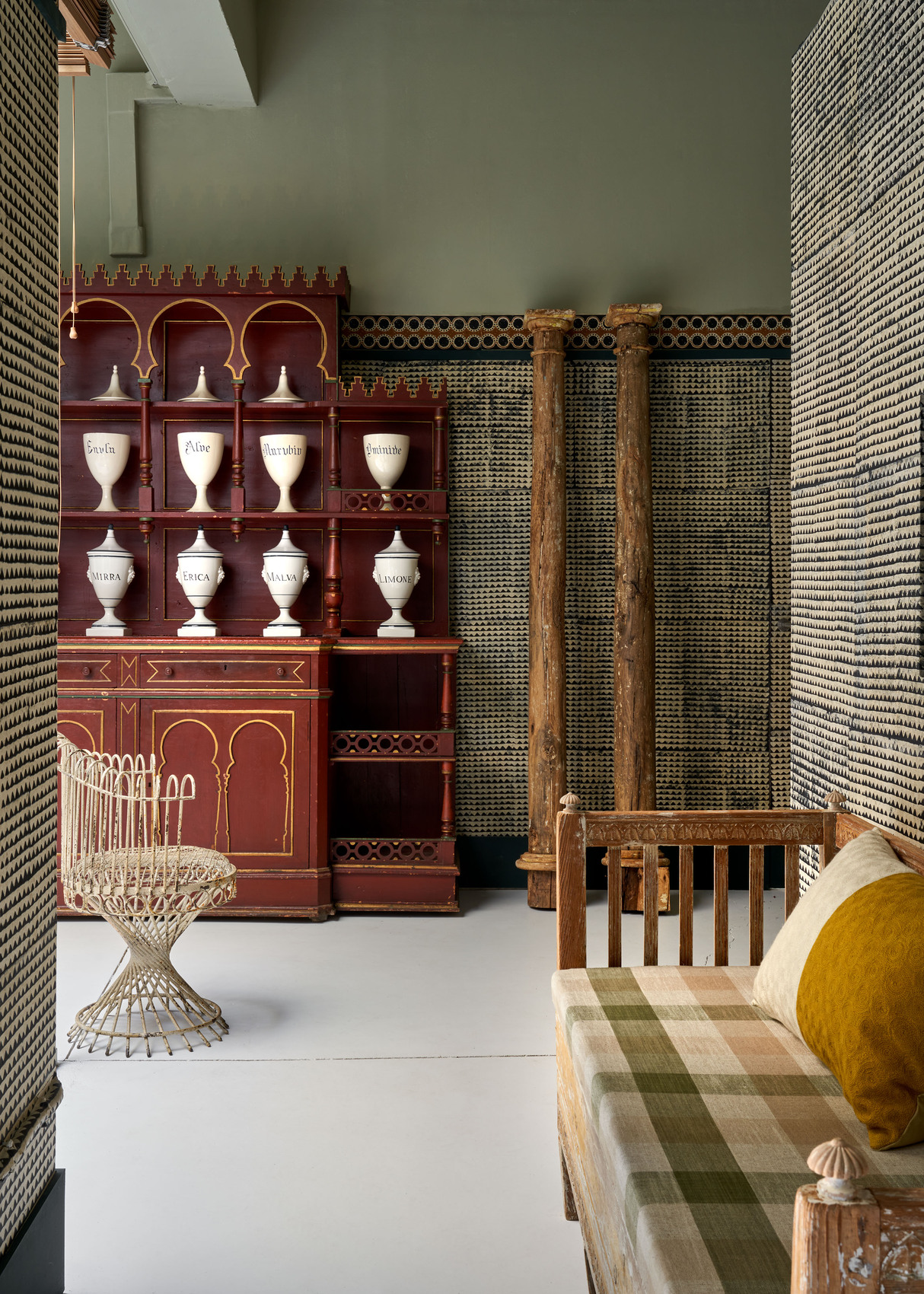
In another area of the cottage reinterpreted by Marta de la Rica and Rue Vintage 74, a period cupboard in polychrome wood with Albarelo pieces, original Venetian ceramics from the 1920‘s. Iron garden armchair and 19th century Gustavian bench.
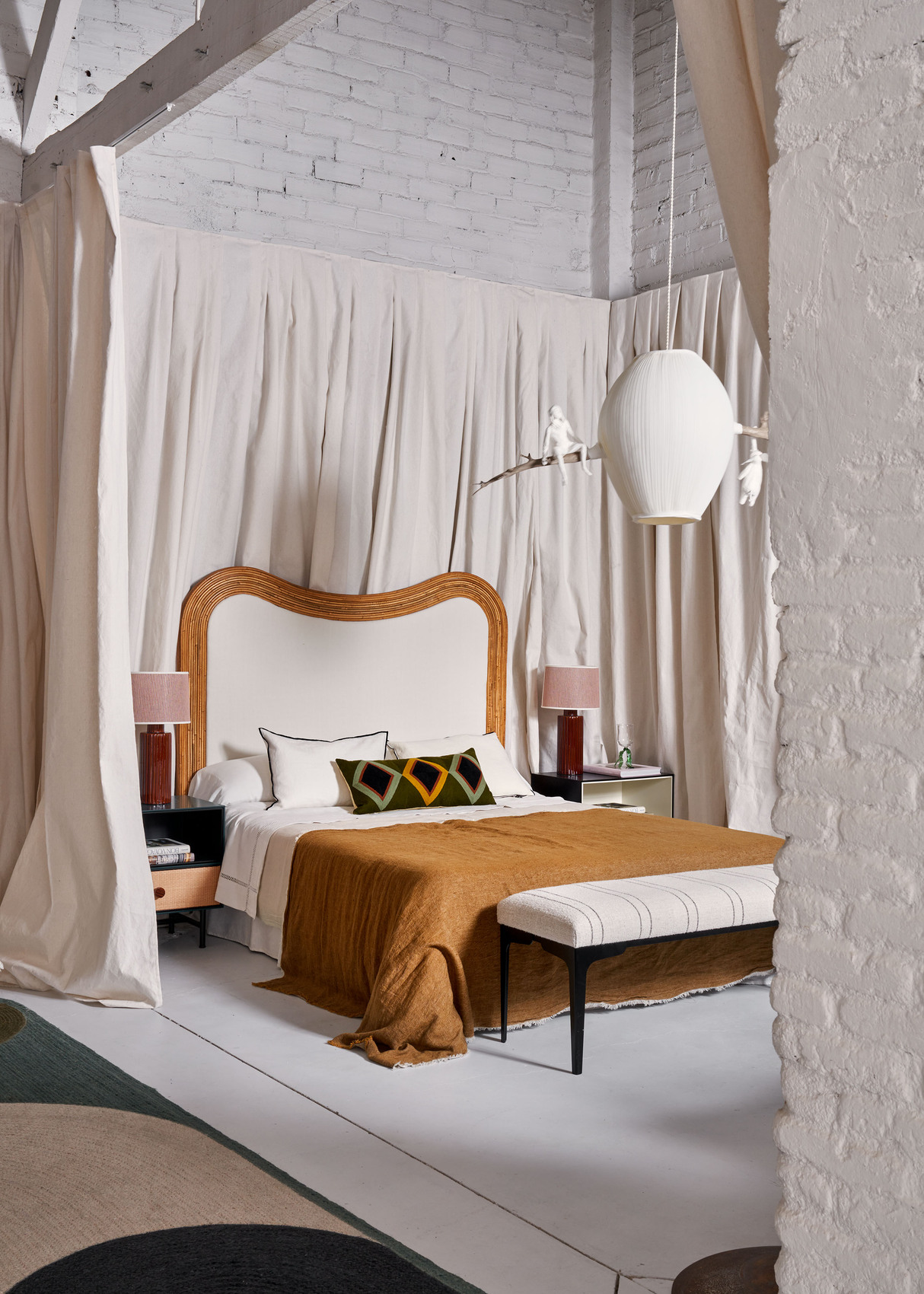
Bedroom with headboard from the Wave collection, made from bamboo. The cushion is from the New Riviera series and the bench is the Airy model, with an iron structure and striped upholstery.
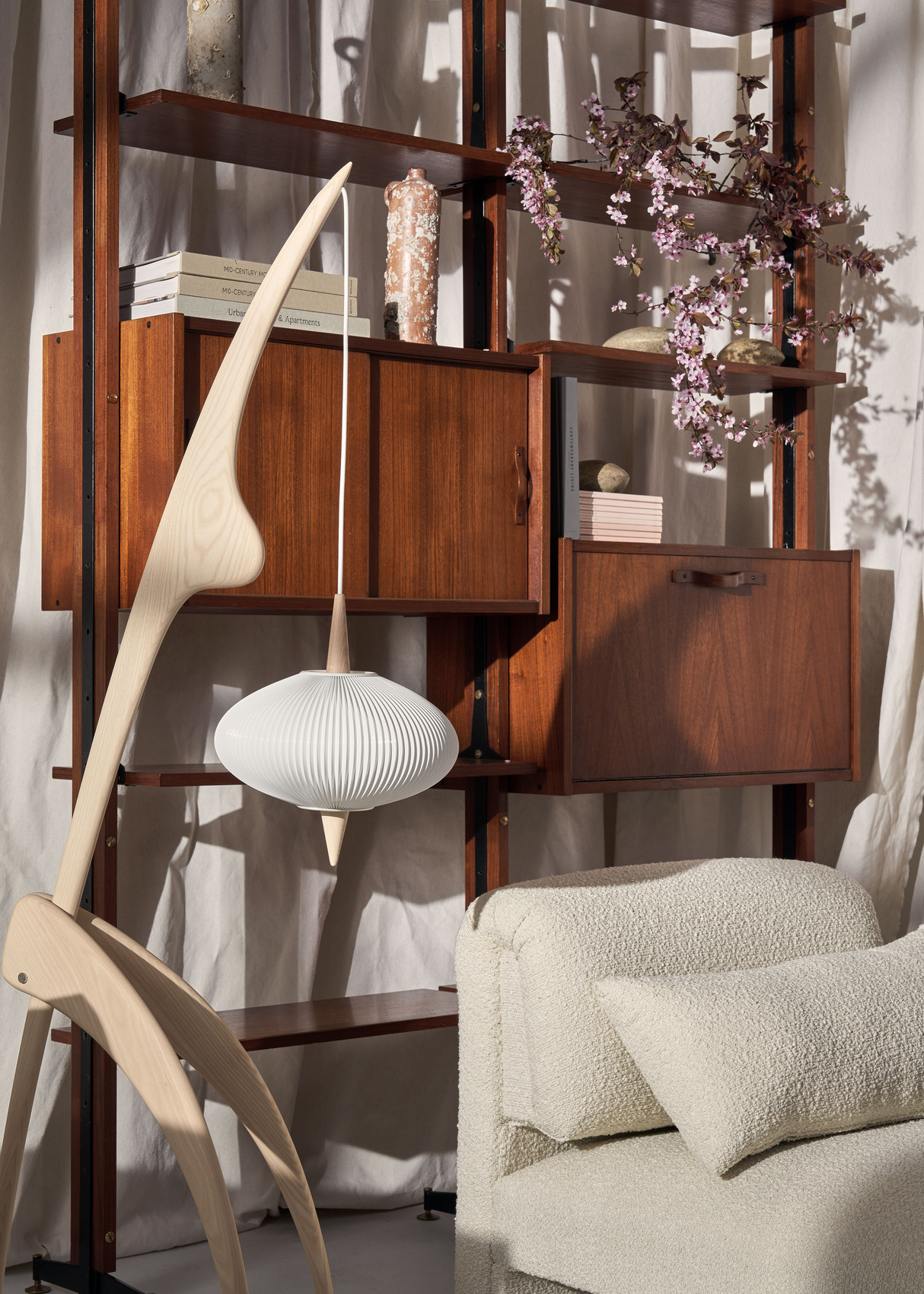
Next to the Italian 60s bookcase in teak wood, Mantis Religiosa lamp, a RISPAL design from the 50s, in chestnut wood and Curvy armchair upholstered in bouclé fabric and inspired by the designs of Pierre Paulin and Giancarlo Piretti.
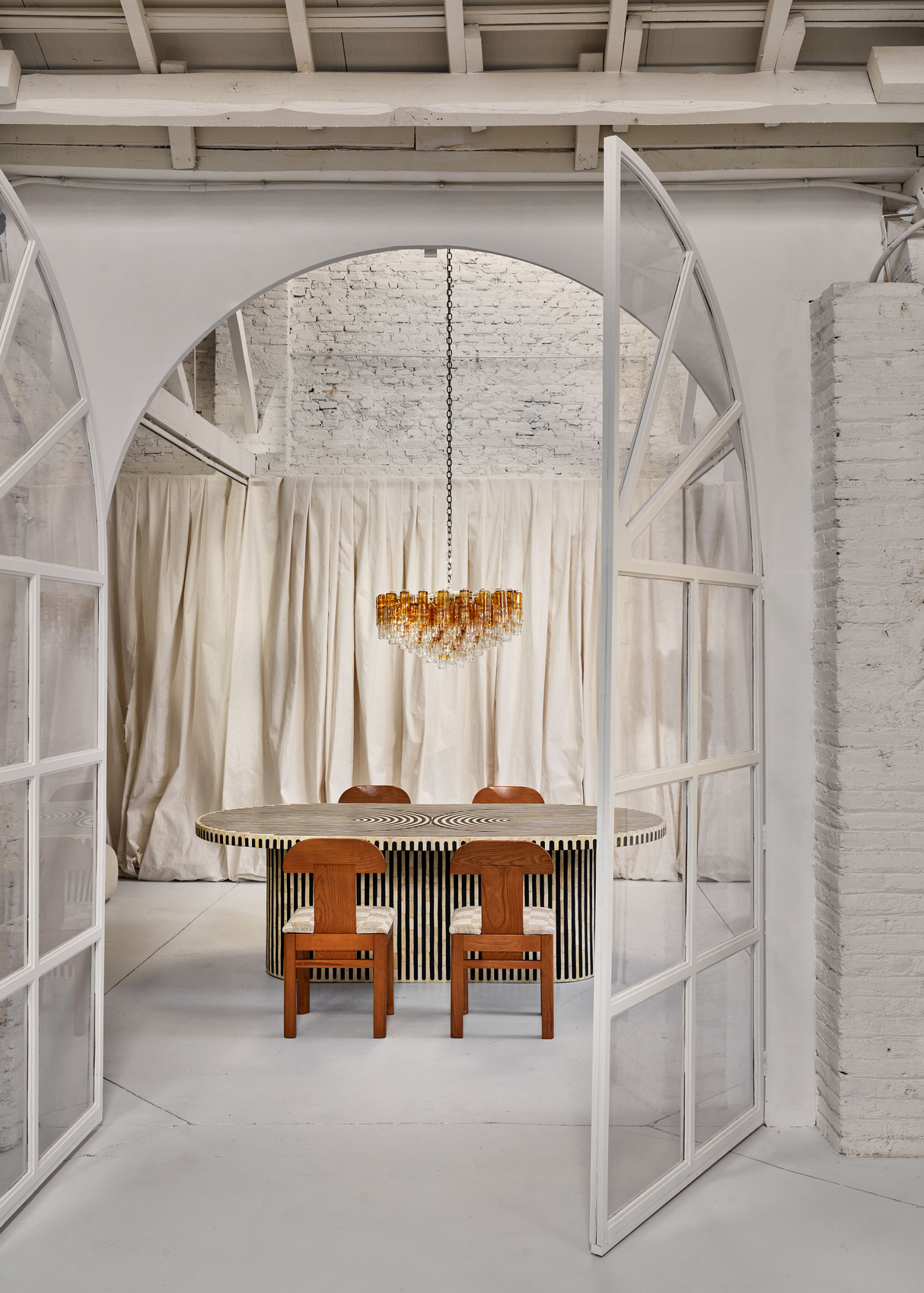
Dining room with a handcrafted Moroccan table, made of olive wood with bone and resin inlays, and a set of Italian chairs from the 1960s with geometric backrest. The Calze lamp is a 1950s piece by Venini in Murano glass, recovered from a palace in Cremoni, designed by the architect Vagnetti.
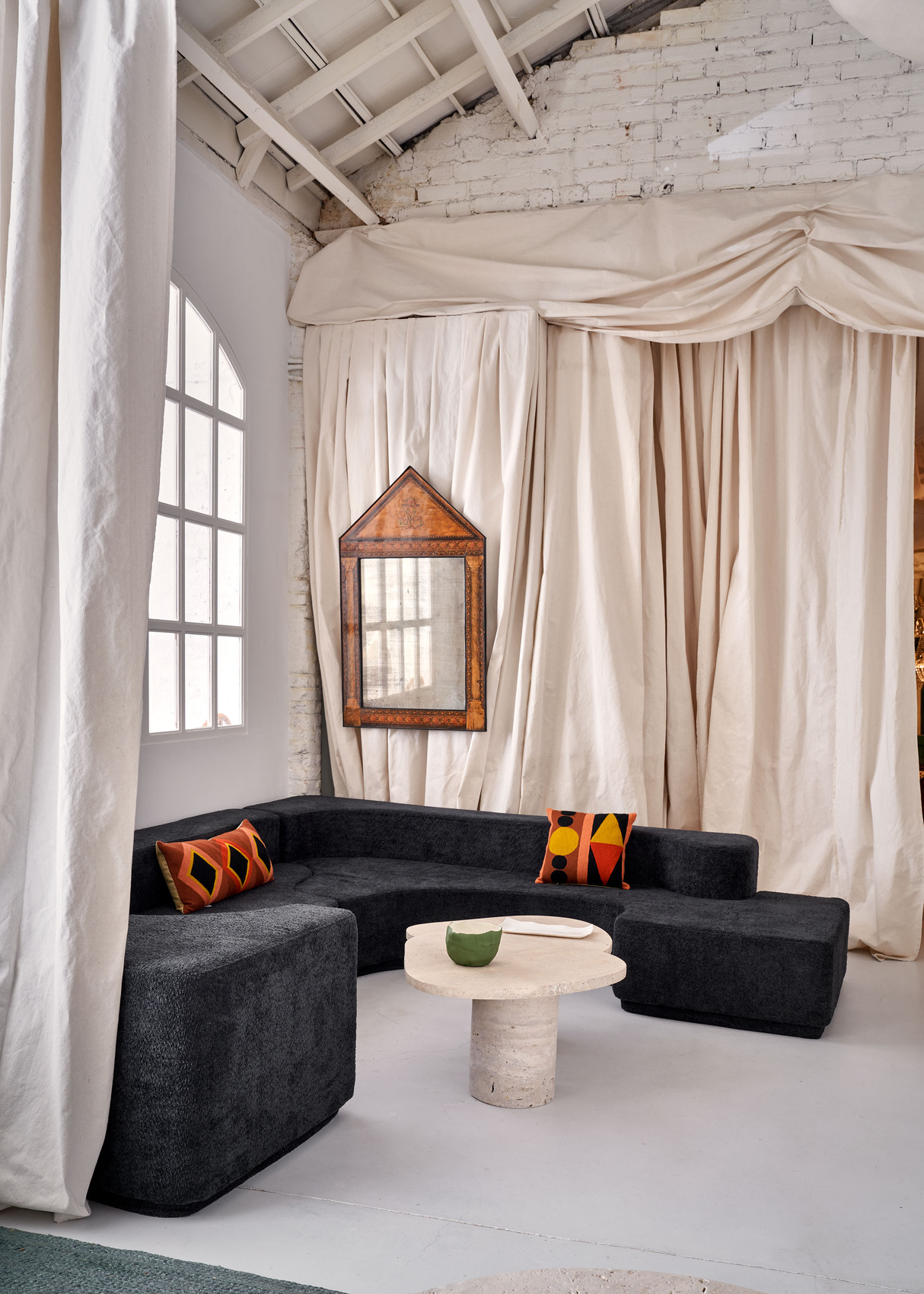
Next to a bay window, a Lara sofa from the 1960s by Roberto Pamio and Renato Todo for Stilwood, organically designed coffee tables in hand-crafted travertine marble and colourful New Riviera (left) and Circus (right) cushions.
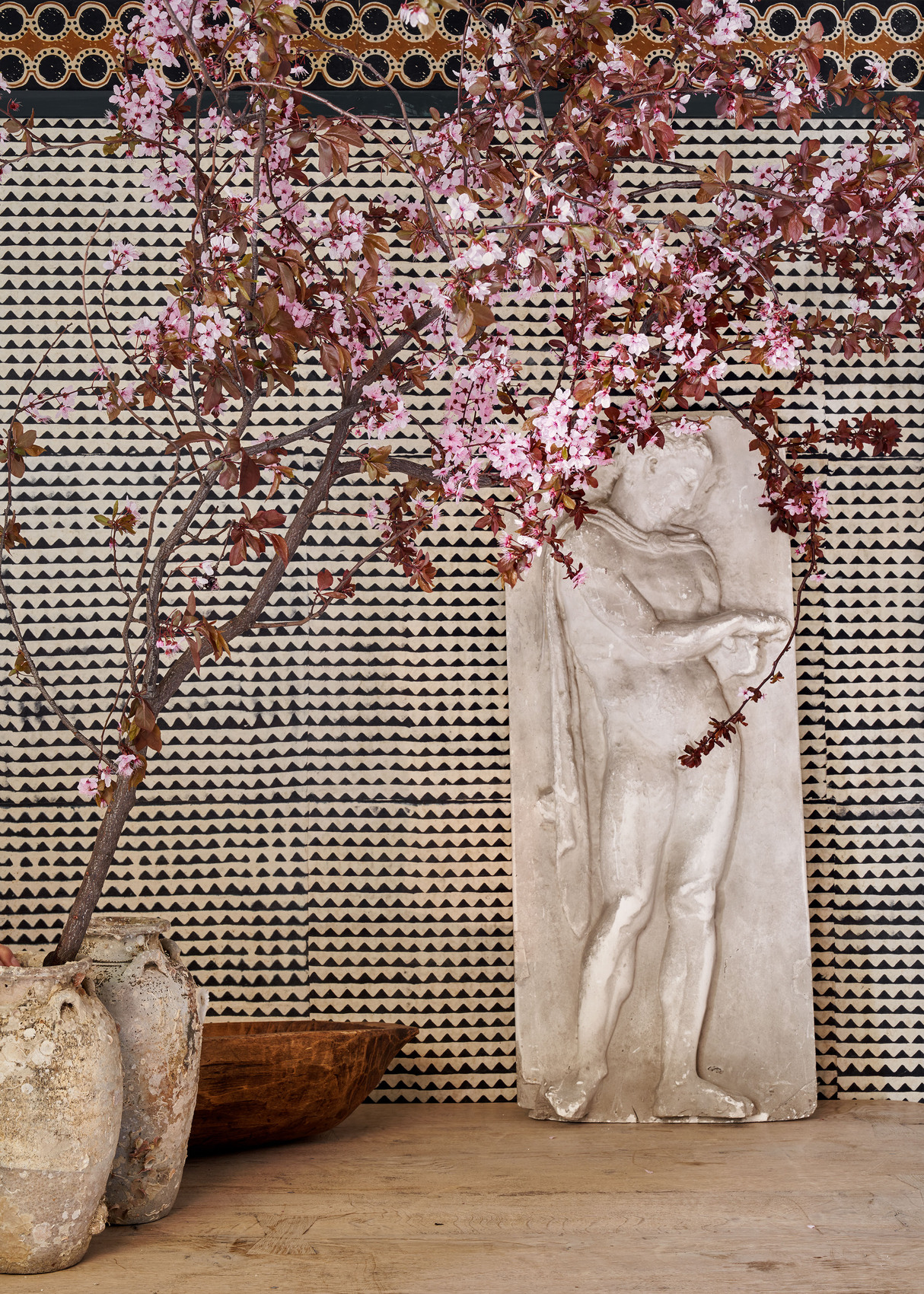
Editor: Beatriz Fabián
Beatriz is a journalist specialising in offline and online editorial content on design, architecture, interior design, art, gastronomy and lifestyle.